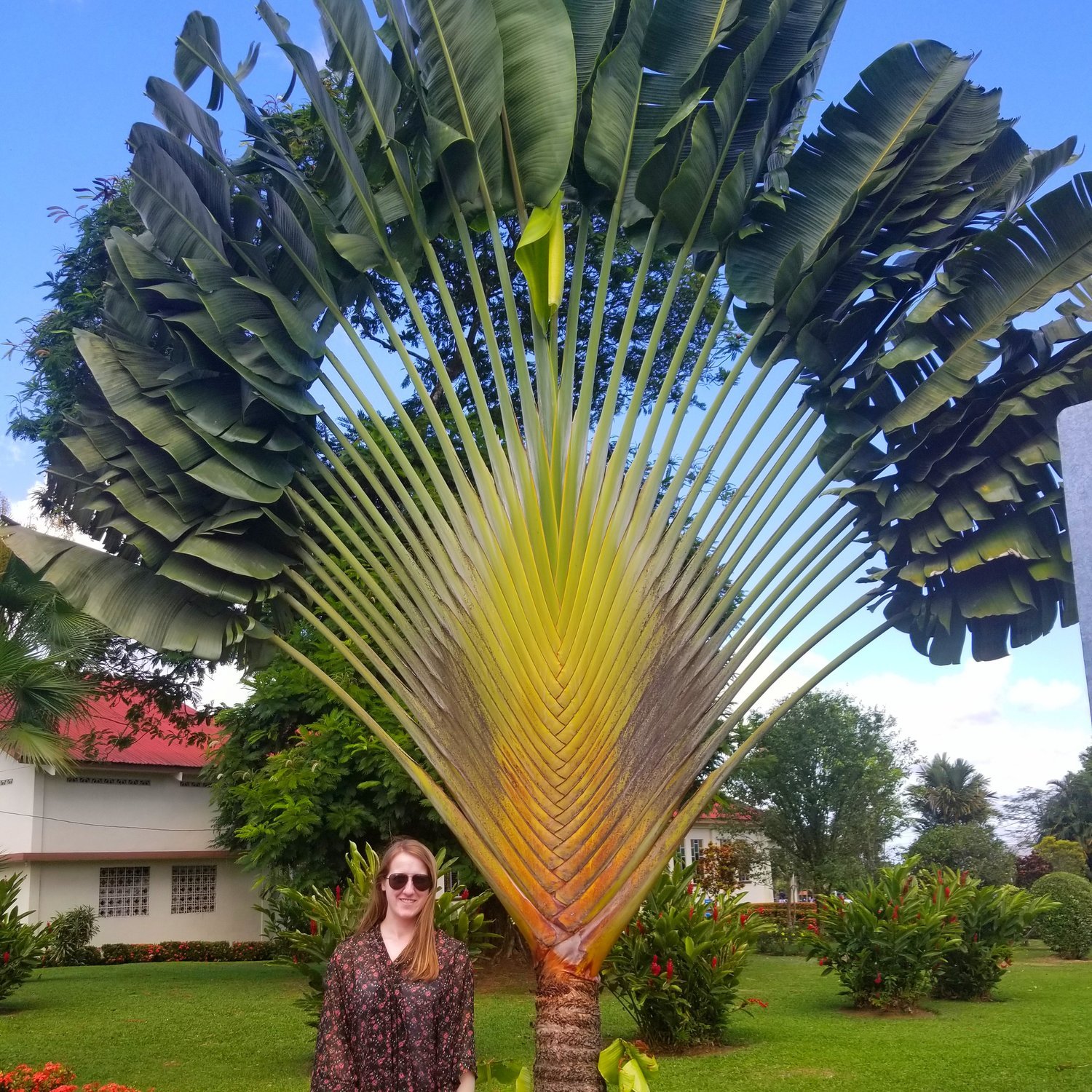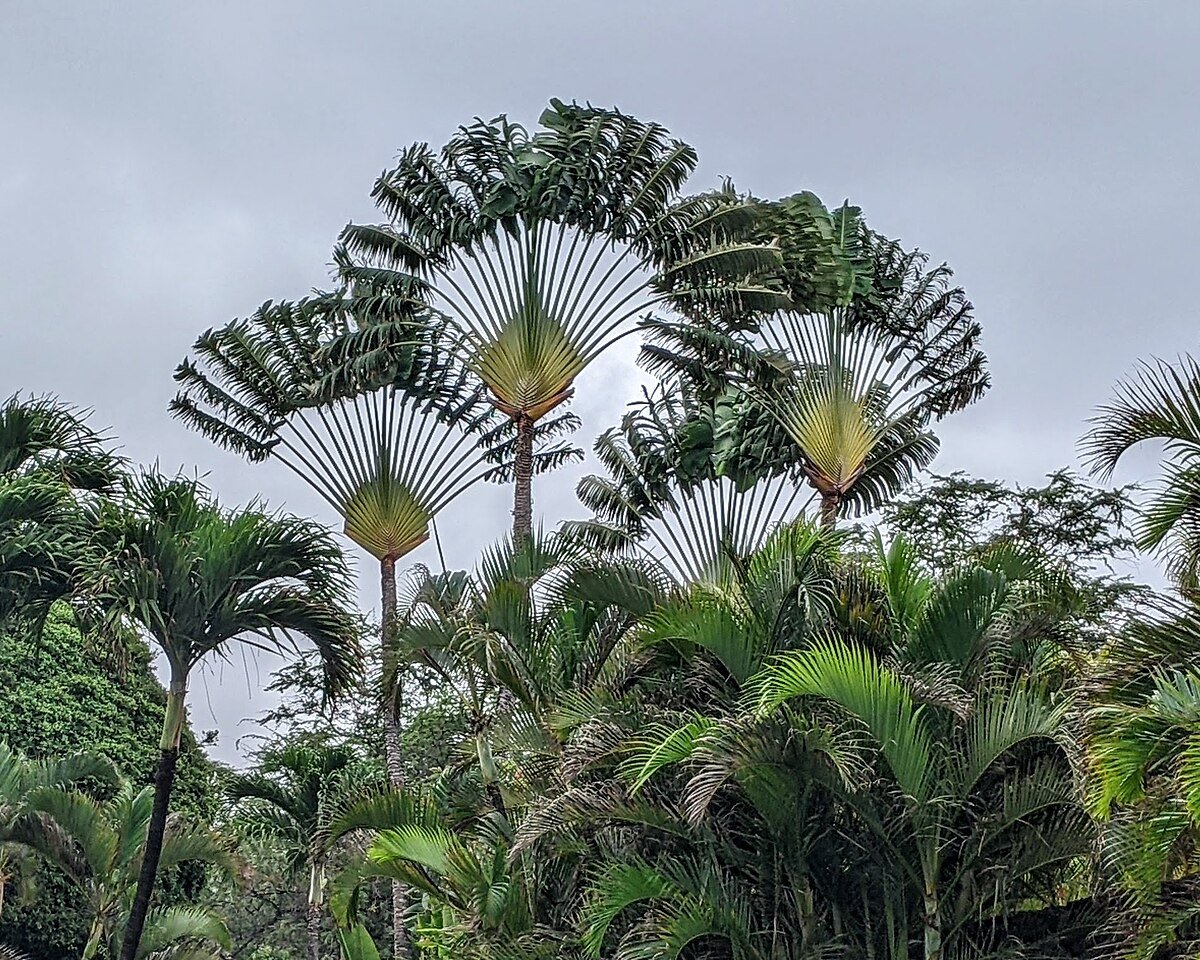One more tropical plant, well, this is not a simple palm; this one is quite stunning and truly occupies a majestic place. The tree has a fanlike shape and large, broad leaves that form an unusual look in the landscape. It stands out in any environment, garden, pool, or resort. This amazing plant will get everyone really curious and want to dive deep into the entire world concerning this plant-how it grows, where it comes from, and, most importantly, why it is so popular all around the world.
What is the Traveler’s Palm Tree?
The Traveler’s Palm, Ravenala madagascariensis, is not a true palm. Its name may mislead and lead one to believe it is one. It belongs to the same family as the Bird of Paradise. The broad green leaves arranged in a fan shape look like a giant hand waving in the wind.
The tree could store rainwater through the bases of its leaves. Earlier, weary travelers could drink this water in case of an emergency. That’s how the plant got its name—Traveler’s Palm.
Traveler’s Palm Tree: Where It Comes From
The most spectacular of palms, the Traveler’s Palm, comes from the great island of Madagascar in the Indian Ocean off the coast of Africa. Wild in the dense tropical forests where it is pummeled by rain and toasted by sunshine, this tree has become so much of a curiosity that it is now being cultivated in many other tropical and warm parts of the world.
In some parts, one can see the amazing Traveler’s Palm tree placed in parks, gardens, or even at the entrance of a hotel. Its panicles of large, fan-like leaves make it an impressive centerpiece.
Traveler’s Palm Features: What Makes It Special
The Traveler’s Palm tree is known for the following:
- Height: Can rise to 30 feet tall
- Leaf width: Each leaf can reach up to 10 feet wide
- Rate of growth: Grows quickly under good sunlight and water
- Penultimate pattern: Penultimate growth in a fan shape from a thick base
- Color: Bright green leaves and a stout gray base
Why the Traveler’s Palm Is So Popular
More than just a pretty plant, the Traveler’s Palm has cultural significance and practical uses:
- Direction: The fan-shaped leaves generally point out east-west, guiding wandering souls through their paths.
- Water: During periods of dry weather, rainwater is collected at the bases of leaves, providing fresh water.
- Shelter: A very large leaf can provide nice shade or can be used to build a small shelter.
- Symbol: In many places, the tree is viewed as a symbol of protection and peace.
Traveler’s Palm in Landscapes and Gardens
It is the domineering look of the Traveler’s Palm tree that comforts the landscape gardener; it is an added tropical touch that gives:
- Backyards and gardens
- Poolside areas
- Walkways and driveways
- Entries to hotels and resorts.
How to Grow a Traveler’s Palm Tree
If you live in warm places, it is easy to grow a Traveler’s Palm; it needs care, but it would be worth taking the time to nurture it. Here are some points: Location and Light:
Plant a palm in a sunny place with enough space to widen it. It enjoys full sun and will also adapt to some light shade.
Soil and Water:
The tree needs rich, well-drained soil. Keep the soil moist but never soggy. Water often, especially in summer.
Fertilizer:
A balanced fertilizer should be applied every few months for tree health. Always consume according to package instructions.
Pruning:
This makes the trees look fresh, because old or brown leaves cut out would increase health.

How to Grow a Traveler’s Palm Indoors
You should have a pretty big space to grow indoors, Young Travelers Palm. It needs:
- A big pot that has holes under it,
- A bright indirect light,
- Regular watering, and
- A humid room or even, probably a humidifier to have nearby.
How to Propagate a Traveler’s Palm Tree
There are two ways in which you can propagate new Traveler’s Palm trees:
- Dividing the Plant
Mature trees produce additional shoots at the base of their main stems. These can be dug up with minimal disturbance and planted elsewhere.
- Seeds
You can grow the tree from seeds, but it takes time. Seeds need warmth and stay moist until they sprout, which can take months.
Traveler’s Palm Tree: Watch Out for These Problems
Even though the Traveler’s Palm is quite a tough plant, it can face some challenges:
- Pests: Watch for anything from spider mites to mealybugs. Treat with insecticidal soap or neem oil as necessary.
- Diseases: Make sure your soil is well-draining, as root rot could develop with an extended presence of moisture.
- Wind Damage: High winds can tear the large leaves. Place the tree in circumstances that will protect it from strong winds.
Traveler’s Palm vs. True Palm Trees
Many people think the Traveler’s Palm is a real palm, but it’s not. Here’s how they differ:
| Feature | Traveler’s Palm | True Palm |
| Family | Strelitziaceae | Arecaceae |
| Leaf shape | Fan-like, flat spread | Fronds that grow in a circle |
| Water storage | Stores water in leaf bases | No water storage |
| Flower style | Banana-like flowers | Clusters of small flowers |
Traveler’s Palm Tree: Perfect for Today’s Landscapes
Modern landscaping embraces plants that are bold and easy to maintain. Enter the Traveler’s Palm, which looks quite dramatic, grows at a fast rate, and needs little trimming.
Uses for:
- Tropical gardens
- Eco-friendly landscapes
- Luxury resorts
- Family yards
Conclusion
But the Traveler’s Palm really is no ordinary tropical plant; it is a living artwork! Standing tall and proud, it creates a paradise wherever it is planted. Whether you live in a warm climate or are nurturing one inside, this tree will beautify your life, provide shade, and perhaps offer a smattering of history.
Also Read: The Traveler Hired the Wrong Tour Guide


